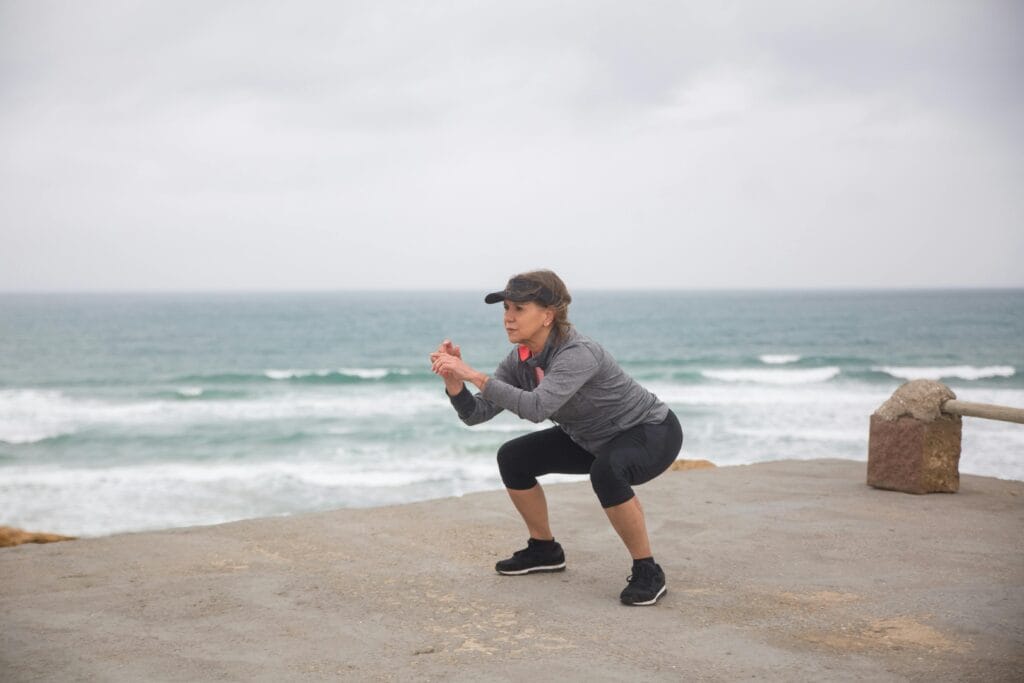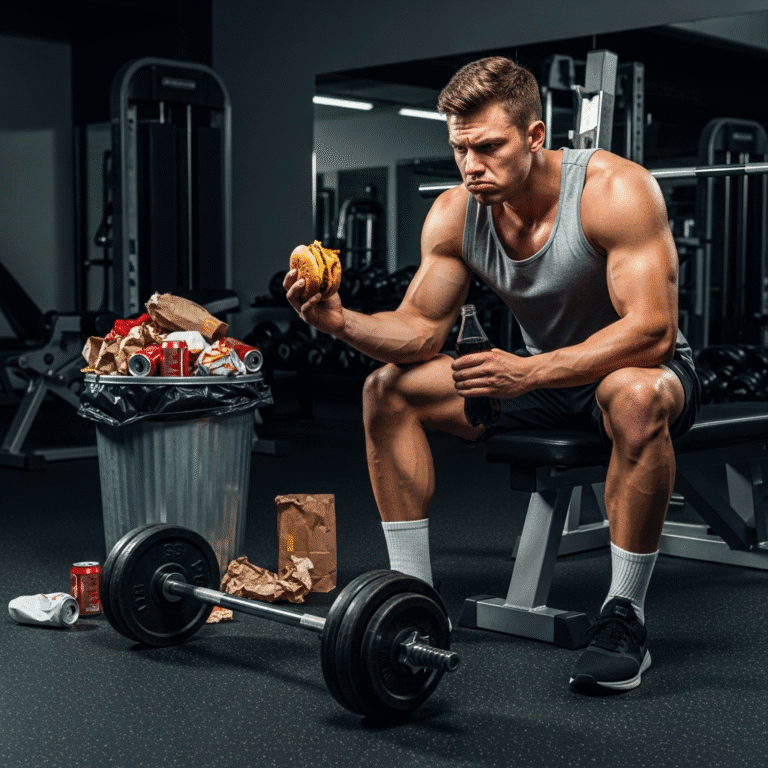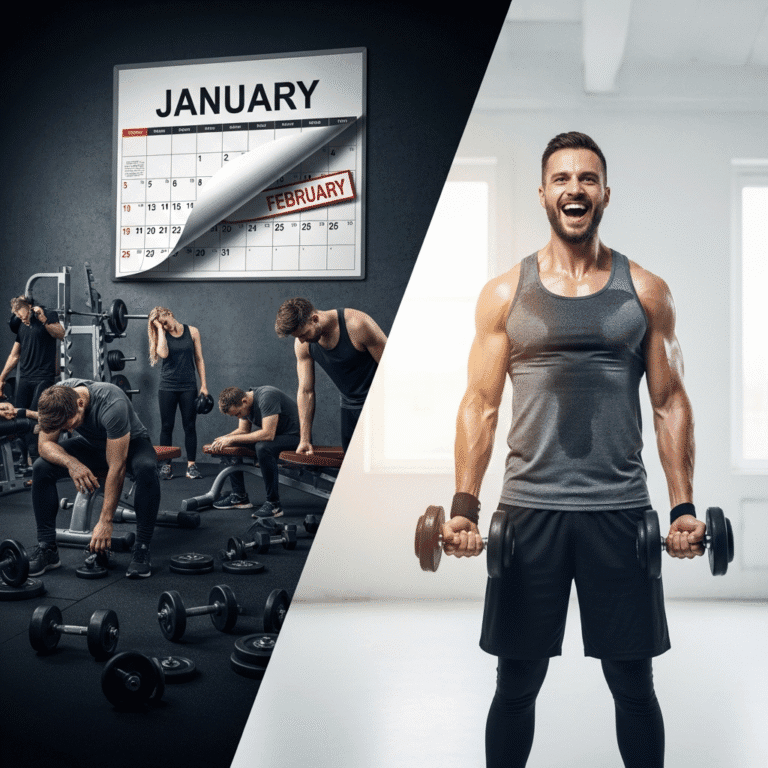FREE SHIPPING OVER $50
Over 45? These 6 Bodyweight Workouts Build Real Strength—Faster Than Any Machine

As you get over 45, you start to notice things. The casual lifting of heavy boxes becomes a little harder, climbing stairs feels like more of a chore, and the simple act of getting up from a chair can feel like a feat of engineering. The common advice is often to join a gym and start lifting weights on machines. But what if the most effective, safest, and fastest way to regain your strength has nothing to do with fancy gym equipment?
The truth is, a growing number of fitness and longevity experts are now saying that for people over 45, bodyweight workouts are a superior choice. Machines are great for isolating muscles, but they often neglect the most important aspects of functional strength: balance, coordination, and stability. Bodyweight exercises, on the other hand, force your body to work as a complete unit, mimicking the movements of real life. They are more efficient, they are safer for your joints, and when done correctly, they build a kind of “real” strength that no machine can replicate.
Why Bodyweight Is the New Powerhouse for Fitness Over 45
For decades, the gym has been sold as the only place to build strength. While machines have their place, they can be limiting and, for some, even counterproductive as they age. Here is why bodyweight training is the perfect fit for people over 45:
- It Builds Functional Strength: Machines put you on a fixed path, which does not translate to real-world movements. Bodyweight workouts are based on natural human motions—pushing, pulling, squatting, and lunging. The strength you gain from these exercises is the kind you will use every day to get in and out of a car, carry groceries, or play with your grandkids.
- It’s Safer for Your Joints: As we age, our joints become more vulnerable. Bodyweight training uses your own body’s natural load, which is less jarring and safer than piling on heavy iron. It helps to strengthen the stabilizing muscles around your joints, providing them with more support and protection.
- It Improves Balance and Stability: This is a crucial, often-neglected aspect of fitness after 45. Machines do the balancing for you. Bodyweight moves force you to engage your core and stabilizing muscles, which improves your balance, reduces your risk of falls, and helps you maintain your independence.
The 6 Bodyweight Workouts That Build Real Strength
These six exercises are the foundation of a complete bodyweight strength program. They are accessible, highly effective, and can be progressed to challenge you no matter how strong you get.
1. The Squat
The squat is the king of all bodyweight moves and is arguably the best exercise you can do. It works your entire lower body—quads, hamstrings, glutes—while also building core strength and improving mobility in your hips and ankles. As a fundamental human movement, it directly translates to real-life activities like sitting down and standing up.
How to Progress It: Once you can do 15-20 perfect reps, you can add challenge by slowing down the tempo (taking 3-5 seconds to lower yourself), or by moving to a single-leg variation like a pistol squat or a Bulgarian split squat with your back foot elevated.
2. The Push-Up
The push-up is a powerful upper body builder. It works your chest, shoulders, triceps, and core all at once. It is a compound movement that requires your entire body to work together, building a kind of integrated strength that machines cannot replicate.
How to Progress It: If a full push-up is too difficult, start with an incline push-up (with your hands on a countertop or bench). As you get stronger, move to a lower surface. Once you can do 15 perfect reps on the floor, you can add challenge by slowing down the tempo or trying a decline push-up with your feet elevated.
3. The Lunge
The lunge is an incredible move for building unilateral (single-leg) strength, which is essential for balance and stability. It targets your quads, hamstrings, and glutes, while also improving hip flexibility. It is a natural movement that directly translates to walking, hiking, and climbing stairs.
How to Progress It: Once a standard lunge feels easy, you can increase the challenge by holding a book or a jug of water for resistance. You can also try a walking lunge or a reverse lunge to target the muscles differently.
4. The Plank
Many people focus on crunches for their core, but the plank is a far more effective move for building real core strength and stability without straining the back. It engages every muscle in your core, from your abs to your obliques and back muscles. A strong, stable core is the foundation for all other moves and is crucial for preventing injury.
How to Progress It: Once you can hold a standard plank for 60 seconds, you can increase the difficulty by lifting one arm or one leg off the ground, or by moving to a side plank to target your obliques.
5. The Glute Bridge
The glute bridge is a fantastic move that strengthens your glutes and hamstrings, which are often weak from too much sitting. A strong posterior chain is critical for a healthy back and for improving your posture. This is a low-impact exercise that is incredibly safe for your joints.
How to Progress It: Once you can do 20 perfect reps, you can increase the challenge by performing a single-leg glute bridge or by slowing down the tempo and pausing at the top of the move.
6. The Inverted Row
One of the biggest shortcomings of a standard bodyweight program is the lack of pulling moves. The inverted row is the perfect solution. It works your entire back, biceps, and shoulders and is crucial for balancing out all the push-ups you are doing. You do not need a gym for this; you can use a sturdy table or a door frame.
How to Progress It: The more horizontal your body is, the harder the move becomes. Start with a more vertical body position and, as you get stronger, walk your feet forward to make your body more parallel to the floor.
The Secret to Progress: How to Use These Moves for Longevity
The reason these moves work faster than machines is that they can be infinitely progressed. The secret to building real, lasting strength is progressive overload, which means you gradually increase the stress on your muscles over time. With bodyweight moves, you can do this without adding a single plate to a machine.
- Increase Your Reps: When a move starts to feel easy, add a few more repetitions to each set.
- Increase Time Under Tension: Slow down the movement. Instead of a quick push-up, take 3 seconds to lower yourself and 3 seconds to push back up.
- Decrease Rest Periods: Cut down the time you rest between sets to challenge your muscles more.
- Master the Progression: As you get stronger, move to a harder variation of the move, such as going from an incline push-up to a full push-up, or from a two-leg squat to a one-leg squat.
Final Thoughts
The notion that you need a gym membership or expensive machines to get stronger after 45 is simply outdated. Science and fitness experts are confirming what our ancestors knew all along: your own body is the most effective and powerful gym you will ever need. By focusing on these 6 foundational bodyweight moves and applying the principles of progressive overload, you can build real, functional strength that not only helps you perform better in the gym, but also in your daily life.
Related Articles
- Want Bigger Glutes and Quads? Science Reveals the Exact Rep Ranges That Actually Work
- This 12-Minute Yoga Routine Reverses Bone Loss Better Than Walking—Doctors Are Stunned
- Men Over 50 Are Building Muscle Faster Than Ever—Here’s the Science Behind the Surge
- Struggling With Tight Hips? These 5 Moves Help You Stay Strong and Mobile as You Age
- This Core Exercise Looks Easy—Until You Try It. Here’s How I Finally Made It Work
- He’s 63, Ripped, and Defying Aging. What He Told Me About Muscle Blew My Mind—You Need to Hear This



